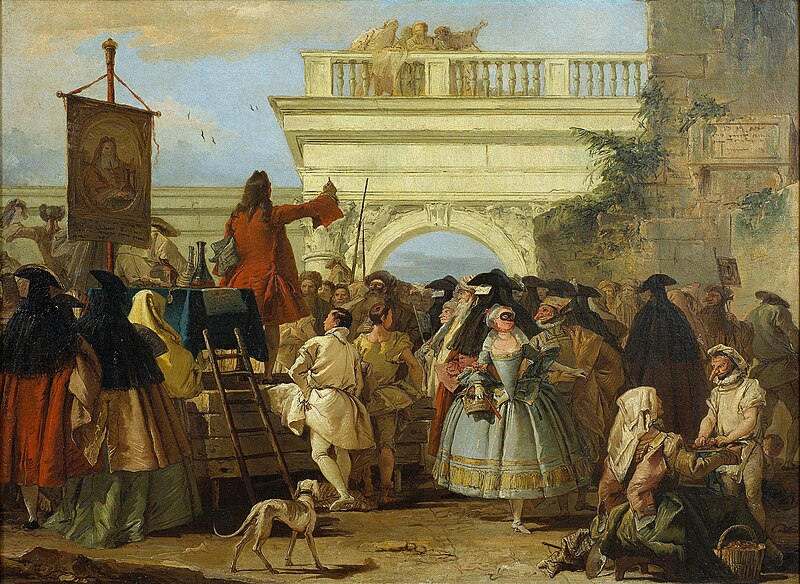Kimbell Art Museum, Fort Worth
August 27–December 31, 2017
Fine Arts Museum of San Francisco
February 10, 2018 – May 28, 2018
Museum of Fine Arts, Boston
July 1–October 8, 2018
Fine Arts Museum of San Francisco
February 10, 2018 – May 28, 2018
Museum of Fine Arts, Boston
July 1–October 8, 2018
Casanova: The Seduction of Europe explores the 18th century across Europe through the eyes of one of its most colorful characters, Giacomo Casanova (1725–1798 ). Renowned in modern times for his amorous pursuits, Casanova lived not only in Italy, but in France and England, and his travels took him to the Ottoman Empire and to meet Catherine the Great in Saint Petersburg. Bringing together paintings, sculpture, works on paper, furnishings, porcelains, silver and period costume, Casanova will bring this world to life.
- Jean-Marc Nattier (1685–1766) Portrait of Manon Balletti (Mlle Marie-Madeleine Balletti (1740–1776), known as Manon Balletti, fiancée (1757–1760) of Giacomo Casanova (1725–1798), wife (1760) of Jacques-François Blondel (1705–1774)
Notorious today for his amorous pursuits, Giacomo Casanova (1725–98) was esteemed by his contemporaries as a charming conversationalist, expert on many topics, and an international man of letters. He traveled widely throughout the continent, with extended sojourns in his native Venice, Paris, London, and much of Eastern Europe, mingling with royalty, popes and luminaries such as Voltaire and Benjamin Franklin along the way. His travels took him to the Ottoman Empire and to meet Catherine the Great in Saint Petersburg.
This exhibition combines more than 250 paintings, sculptures, works on paper, decorative arts objects, period costumes and musical instruments drawn from European and American museums and private collections to illustrate the splendor of 18th-century Europe. Structured by the chronology and geography of Casanova’s life, the exhibition addresses such themes as travel; courtship and seduction; theatre and identity; and the pleasures of dining.
The visual riches Casanova would have encountered are evoked by masterpieces by
Canaletto (1697–1768),
François Boucher (1703–70),
Jean-Honoré Fragonard (1732–1806),
Jean-Antoine Houdon (1741–1828), William Hogarth (1697–1764) and others.
Of special note are three tableaux, illustrating, respectively, a visit to a convent in Venice, a morning toilette in Paris, and a dissipated night of cards in London—scenes composed of mannequins in 18th-century costumes amid period furniture. Thematic threads running through the exhibition include travel; courtship and seduction; theater and identity; and the pleasures of dining.
This exhibition is organized by the Kimbell Art Museum, the Fine Arts Museums of San Francisco and the Museum of Fine Arts, Boston.
Catalogue
Casanova: The Seduction of Europe is accompanied by an illustrated catalogue produced by MFA Publications.
Catalogue
Casanova: The Seduction of Europe is accompanied by an illustrated catalogue produced by MFA Publications.
In eighteenth-century Europe, while the old order reveled in the luxurious excesses of the Rococo style and the Enlightenment sowed the seeds of revolution, the shape-shifting libertine Giacomo Casanova seduced his way across the Continent. Although notorious for the scores of amorous conquests he recorded in his remarkably frank memoirs, Casanova was just as practiced at charming his way into the most elite social circles, through an inimitable mix of literary ambition, improvisational genius, and outright fraud. In his travels across Europe and through every level of society from the theatrical demimonde to royal courts, he was also seduced by the visual splendors he encountered.
This volume accompanies the first major art exhibition outside Europe to lavishly recreate Casanova’s visual world, from his birthplace of Venice, city of masquerades, to the cultural capitals of Paris and London and the outposts of Eastern Europe. Summoning up the people he met and the cityscapes, highways, salons, theaters, masked balls, boudoirs, gambling halls, and dining rooms he frequented, it provides a survey of important works of eighteenth-century European art by masters such as Canaletto, Fragonard, Boucher, Houdon, and Hogarth, along with exquisite decorative arts objects.
Twelve essays by prominent scholars illuminate multiple facets of Casanova’s world as reflected in the arts of his time, providing a fascinating grand tour of Europe conducted by a quintessential figure of the eighteenth century as well as a splendid visual display of the spirit of the age.
This volume accompanies the first major art exhibition outside Europe to lavishly recreate Casanova’s visual world, from his birthplace of Venice, city of masquerades, to the cultural capitals of Paris and London and the outposts of Eastern Europe. Summoning up the people he met and the cityscapes, highways, salons, theaters, masked balls, boudoirs, gambling halls, and dining rooms he frequented, it provides a survey of important works of eighteenth-century European art by masters such as Canaletto, Fragonard, Boucher, Houdon, and Hogarth, along with exquisite decorative arts objects.
Twelve essays by prominent scholars illuminate multiple facets of Casanova’s world as reflected in the arts of his time, providing a fascinating grand tour of Europe conducted by a quintessential figure of the eighteenth century as well as a splendid visual display of the spirit of the age.

_by_Jean-Marc_Nattier.jpg/864px-Manon_Balletti_(1757)_by_Jean-Marc_Nattier.jpg)

Comments
Post a Comment